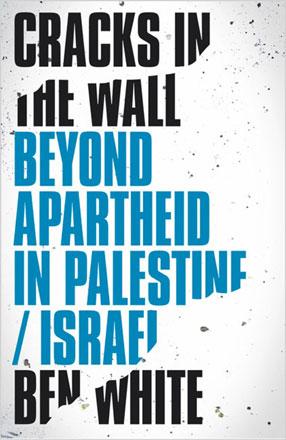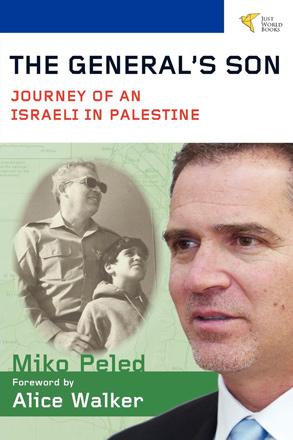You are here
The unintended consequences of apartheid
By Sally Bland - Oct 21,2018 - Last updated at Oct 22,2018

Cracks in the Wall: Beyond Apartheid in Palestine/Israel
Ben White
London: Pluto Press, 2018
Pp. 208
In a relatively brief book, journalist Ben White covers a lot of ground: He pinpoints the salient features of the prevailing situation in the Palestinian-Israeli conflict and analyses where things are heading. Without wishful thinking, he points to sources of hope for the future.
Ironically, these “cracks in the wall”, as he calls them, are largely of Israeli politicians’ own making, though they would lack potency were it not for the Palestinians’ continued resistance over decades.
White begins with a reality check demonstrating that Palestine/Israel is already a single apartheid state, as the result of Israeli colonisation efforts since 1967, which greatly accelerated during the decades of the so-called peace process, leading to de facto, creeping annexation. This has created a situation which international diplomats and some Israeli leaders have warned of, namely, that in the absence of a two-state solution, Israel’s ruling over millions of Palestinians would compromise Israel’s Jewishness and claimed democracy.
Yet, White notes, “this picture painted of a single political entity in which millions of Palestinians cannot vote actually describes the status quo [of some time now], not a future scenario… it is the prospect of a ‘two-state solution’, the idea that Israel’s presence and control over the occupied Palestinian territories still have to be determined or are, in some way, temporary or negotiable, which keeps the same international diplomats from denouncing Israel apartheid as it exists today”. (p. 28)
But as time passes, it becomes harder to deny the obvious.
White covers the impasse in Israeli politics regarding the Palestinian question, which derives from the fact that “the Israeli maximum on offer does not meet the Palestinian minimum, or the demands of international law”. (p. 31)
While analysing the Israeli political scene, White covers the many internal differences, but stresses “the commonalities that unite Israel’s main political leaders and factions, namely the belief in the right of the Jewish people to the entire land of Eretz Yisrael… and the denial of the right of the Palestinian people to self-determination. It is impossible to understand how we got to where we are today without grasping this uncomfortable truth…” (p. 32)
A very serious issue that has recently emerged is the widening gap within Jewish communities abroad and between them and Israel, partly due to Israel’s treatment of the Palestinians and partly because the younger generation does not find Zionism relevant to their lives. “This fragmentation within the organised Jewish community, especially in the US, and the growth in opposition to not just individual Israeli policies but to Zionism itself, is the first ‘crack in the wall’.” (p. 52)
This is especially significant since American Jews’ support is not primarily measured in terms of donations but more in terms of the role they play in shaping US foreign policy. This chapter is particularly interesting for it traces fluctuations in Jewish support to Zionism and Israel historically, and covers many new groups from liberal Zionist ones, such as J Street, to Jewish Voice for Peace whose work for equality and justice in Palestine closely aligns with that of progressive Palestinians.
Another serious crack in the wall is that support to Israel is no longer a bipartisan issue in the US as it always has been. Rather, leftists and members of the Democratic Party are moving away from unconditional support to Israel while Republicans and right-wingers are moving closer. This dynamic is connected to Israel’s miserable human rights record and its increasing alliance with ultra-right, racist forces, many of whom have anti-Semitic roots but are now ready to support Israel.
White also devotes a chapter to BDS as a sign of growing disenchantment with Israel. He has clear counterarguments to claims that BDS is anti-Semitic. Throughout, his writing is both lucid and inventive. For example, he entitles the chapter spelling out hope for the future “Palestinian green shoots and signposts”, noting that recently, “there have been a number of developments emerging from Palestinian grassroots activists and intellectuals that offer signposts on the way to post-apartheid Palestine/Israel — green shoots that are a stark contrast to the political stagnation in the principle political organisations”. (p. 120)
In this chapter he discusses prisoners’ hunger strikes, the increasing number of protests uniting Palestinians on both sides of the green line, united opposition to the destruction of Bedouin communities, and revitalised struggle in Jerusalem.
In the last chapter, White explores the advantages of a single democratic state as opposed to the two-state model that has only served as a cover for Israel’s intensified colonisation. While the two-state solution is generally assumed to have most support, White quotes a number of polls showing it is not so clear-cut. Overall, White’s arguments have added credibility because he cites a wide variety of surveys and other sources, Palestinians as well as Israelis, and Jews across the political spectrum from hard-core Zionists to anti-Zionists. All in all, “Cracks in the Wall” is a must-read for anyone concerned about the future of Palestine.
Related Articles
What he means is that they are winning the battle of ideas with Zionism. More and more people are recognising the legitimacy of the Palestinians’ quest for their rights, even as Israel’s ongoing occupation, racism, human rights violations and war crimes chip away at its legitimacy. The terms of the debate have changed in a way conducive to Palestinians advancing their right to self-determination.
The General’s Son: Journey of an Israeli in PalestineMiko PeledUS: Just World Books, 2012Pp.
Decolonising Israel, Liberating Palestine: Zionism, Settler Colonialism, and the Case for One Democratic StateJeff HalperLondon: Pluto Press

















